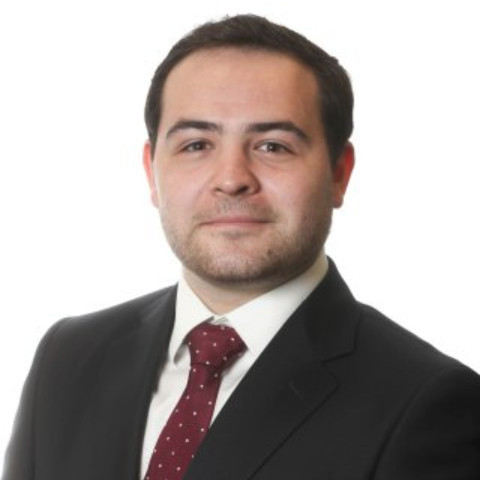High Court: Coercive feeding of anorexic woman in wardship brought to an end

The High Court has determined that an anorexic woman should not be fed against her wishes by her treating doctors despite the risk of premature death. It was held that, in all the circumstances of the case, it was in the best interests of the woman for coercive feeding to end.

About this case:
- Citation:[2021] IEHC 836
- Judgment:
- Court:High Court
- Judge:Ms Justice Niamh Hyland
In making the order sort by the HSE, the court considered recent case law, including In the matter of JJ [2021] IESC 1. In particular, it was noted that the woman suffered from anorexia for over 25 years and was therefore not likely to recover from the illness. Further, the court noted that there was still the possibility of treatment for the woman on an agreed basis with her doctors.
Background
The woman, known as Ms M, was 44 years old and had been suffering from severe treatment-resistant anorexia nervosa for over 25 years. She was married and had been supported by her husband throughout her illness.
Ms M attended Cork University Hospital between 2011 and 2019 for treatment of her condition, although her admissions were typically a result of severe emaciation and acute medical concerns. Usually, Ms M would only partially comply with recommended care until her weight was sufficiently stable to allow her to be discharged from hospital.
By November 2019, Ms M suffered collapse, hyponatremia and hypoglycaemia as a result of her malnutrition. She refused food and nasogastric re-feeding and sought to leave the hospital. A report was provided by Ms M’s consultant psychiatrist which outlined that she was not complying with her recommended care and that her cumulative caloric intake was well below normal requirements. The consultant stated that Ms M was severely underweight with a BMI of just 11.8.
In December 2019, the High Court appointed a guardian ad litem to Ms M. A further report was prepared which outlined that Ms M lacked capacity to refuse treatment. in January 2020, Ms M was made a ward of court and was sent to a hospital in England for treatment of her condition.
Her condition improved in England, where she maintained an increased weight with a negotiated meal plan. It was eventually determined that she could be treated on an outpatient basis and she returned to her home in Ireland in November 2020.
In December 2020, Ms Justice Niamh Hyland directed that Ms M could continue to live at home. Further, it was ordered that clinicians were not permitted to use force to administer nasogastric feeding unless a court order was granted.
Unfortunately, Ms M’s condition regressed throughout 2021 and she lost weight. Ms M stated that she wanted the wardship procedure to end and that she was concerned about being admitted to hospital against her will. She was admitted to hospital coercively in April 2021 and was only released following a court hearing in May.
Thereafter, Ms M was treated on an outpatient basis with no provision for coercive treatment. In July 2021, a medical report stated that Ms M continued to lack capacity due to her anorexic condition and failed to appreciate the severity of her illness. It was noted that coercive inpatient treatment resulted only in temporary weight gain which plateaued following lengthy admission, after which Ms M’s weight dropped again.
In December 2021, the HSE sought orders that Ms M would be provided with care and psychiatric treatment in the community and as an inpatient, provided that (a) her treating doctors considered it to be in her best interests and (b) that she was agreeable to accepting care.
High Court
The High Court began by examining the medical evidence in the case. It was noted that Ms M expressed that she did not wish to receive nasogastric feeding and that the short-term stabilisation of her weight had not been followed by meaningful recovery from her anorexia.
Further, despite the doctors’ concerns for further deterioration and risk of death, the medical opinion stated that it was not in Ms M’s best interests to receive coercive treatment. This opinion had also been presented to the court by a different doctor in May 2021.
The court noted that the orders sought by the HSE were different from previous orders which did not provide for coercive treatment. The court held that the previous orders had been made when Ms M’s weight was relatively stable. However, the present application involved a situation where Ms M could refuse life-saving treatment.
The court held that Ms M’s health was “very precarious”, and that if Ms M’s chronic malnutrition continued, there was a substantial risk of premature death. It was held that the correct legal approach was to apply the “best interests” test in circumstances where substituted consent was being sought from the court (A. v Hickey [2021] IEHC 318; In Re a Ward of Court (No. 2) [1996] 2 IR 79).
The court held that it was not in the best interests of the ward for coercive treatment to continue, having regard to the highly invasive nature of nasogastric feeding. It was also held that the long-standing nature of Ms M’s anorexia was an important factor because it showed that she was unlikely to recover from her illness at this point.
It was also noted that there were no dissenting voices either from a medical or family perspective to the application. Further, the court considered the medical opinion that the ward was very frail and that coercive treatment would carry medical risks to her. As such, the constitutional consideration of a right to life did not exclusively favour the provision of treatment.
Conclusion
Having regard to all the relevant factors, the court concluded that it was in Ms M’s best interests that no further coercive treatment take place. It was noted that the court might take a different view if the duration of the illness was shorter or if the ward was younger.
The court also emphasised that Ms M still lacked capacity in respect of decisions relating to her illness and that acceptance of treatment did not equation to a capacity to consent. Finally, it was held that Ms M’s medical team were best placed to decide what treatment should be offered.





